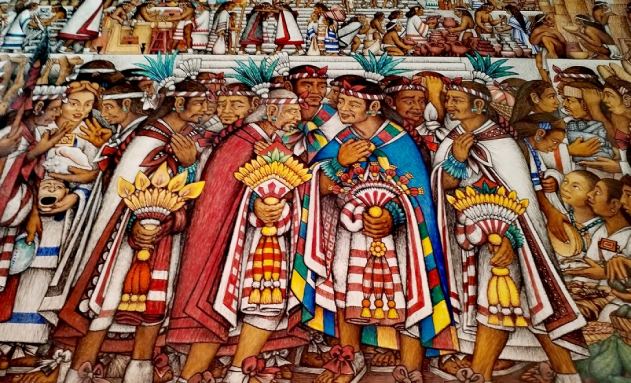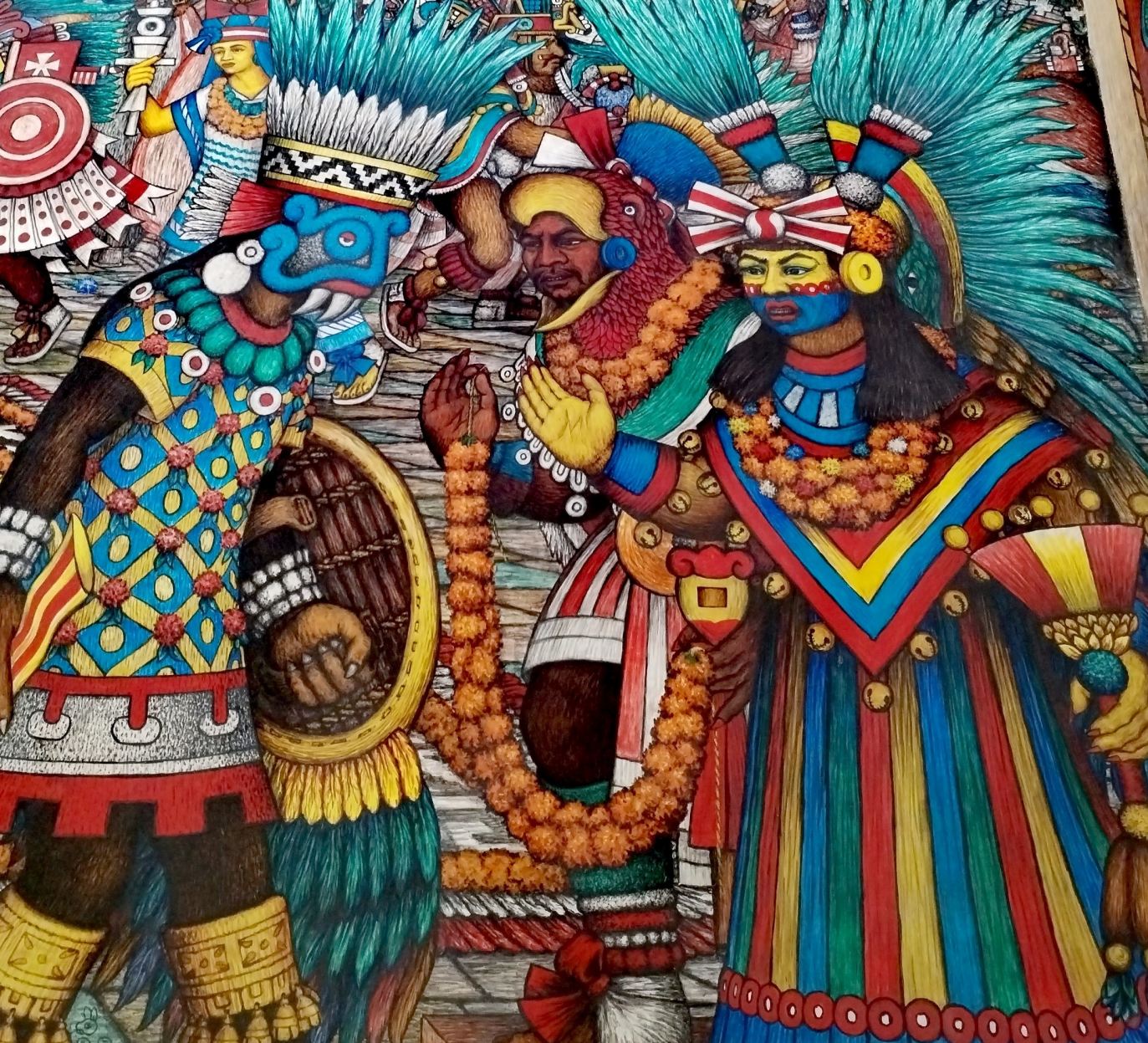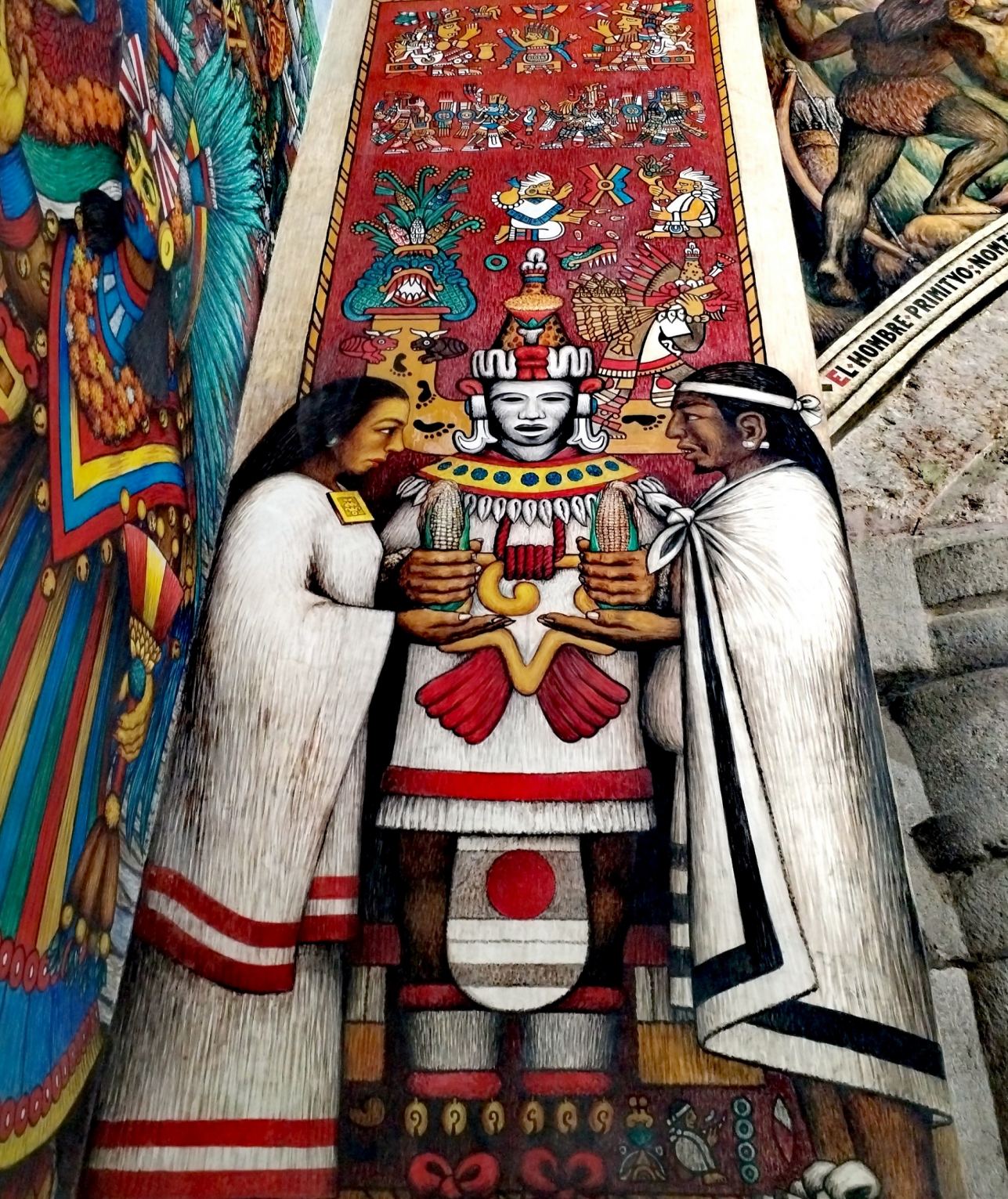NEW YORK - May 30, 2023 - PRLog -- Displayed in Tlaxcala's City Hall is one of the most important art works of the artistic movement that began to consolidate 100 years ago and that distinguished the country worldwide: the Mexican muralism.
Under the name of The history of Tlaxcala and its contribution to the Mexican art through time, this piece is unique not only for its large dimensions, with more than 4,800 square feet of walls, from the ground floor and into the stairwell, leading to the second floor of the City Hall; but in itself is an individual feat of the master Desiderio Hernández Xochitiotzin, who from 1956 to 2001 painted most of the scenes that capture the history of a territory considered the cradle of miscegenation in Mexico: Tlaxcala.
Currently, the municipality promotes that visitors enjoy the magnificence of this work without restrictions, from 10:00 a.m. to 5:00 p.m. every day, including holidays. The Tlaxcaltecan capital is 1.4 hours from Mexico City and half an hour from Puebla.
There is increasing international recognition of this mural whose technique is the same used by prestigious Diego Rivera, José Clemente Orozco and David Alfaro Siqueiros, - al fresco -. This technique consists in applying wet plaster on the walls to which master Desiderio afterwards applied natural materials –such as minerals, nopal slime, portland cement–, but he was also able to use acrylic paints, which according to the tour guide expert in this work, Leopoldo Gamboa, "this combinations permitted him to make compositions that endowed with greater vivid color and at the same time greater resistance."
Hernández Xochitiotzin, born in Tlacatecpac, Tlaxcala, in 1922, lived with Gerardo Murillo since he was 19 years old. Murillo, better known as Doctor Atl, founded the muralist movement in Mexico at the time of José Vasconcelos, Minister of Education that promoted artists in post-revolutionary times.
A pupil of Dr. Atl and fellow student of Frida Khalo and Diego Rivera, the young Desiderio was able to make compositions in the likeness of his teacher: grinding minerals suitable for the weather conditions in Tlaxcala, whose environment makes oil painting and materials derived from plants and animals very difficult to preserve.
Engravings, paintings, and reproductions of his murals have been exhibited in important forums such as the Vatican Museum, Universities like La Sorbona in Paris, Stockholm, and Harvard, and most recently at Los Pinos Cultural Complex, in Mexico City.
Characteristics of "The history of Tlaxcala" Mural
Unlike the works of Rivera, Orozco and Alfaro Siqueiros, the frescos by Desiderio Hernández did not intend to show ideological content, but instead represent a journey through what he called Tlaxcaltequity, states guide Leo Gamboa.
"More than a history lesson, it is a didactic work, which has its small interpretative percentage, yes, but also teaches people who were some of the historical figures, deities, and symbols, with 70 percent of Tlaxcaltecan history and 30 percent of national history. It is not like a textbook, but it is a very accessible work, an iconographic and didactic discourse," says Don Leo.
Due to its magnitude, the work is usually seen in fragments. Some studies divide it into 24 segments, others prefer to do it in four large blocks: the pre-Hispanic Tlaxcala; the conquest; the Tlaxcaltecan Golden Age, and from the Age of Enlightenment to Porfirismo in Tlaxcala and Mexico. However, Don Leo, as the author Desiderio himself liked to do, suggests that it be simply divided in two: the ground floor, which includes the pre-Hispanic era from the beginning of the migration of the Tlaxcaltecans until before the arrival of the Spaniards, and a second one that begins in the stairwell, which recounts the arrival of the Europeans up to the Porfirian period.
The mural dazzles with thousands of details, the deep historical research made by master Desiderio to portray the customs, cosmogony and events that happened in pre-Hispanic life, the alliance between the Spanish and the Tlaxcaltecan lordships in their war against the Mexica empire, the great tianguis from Ocotelulco, the images of La Llorona, Hernán Cortés and Doña Marina, the warlord Xicohténcatl and the outstanding Tlahuicole plus other warriors with plumes and shields, the god of war Camaxtli, the use of corn and maguey, the arrival of Quetzalcóatl, the presence of the Catholic clergy, documents of Independence...
Contact
ENroute Communications
***@enroutecommunications.com
Photos: (Click photo to enlarge)


Read Full Story - The must-see mural in Tlaxcala's Capital City | More news from this source
Press release distribution by PRLog
The must-see mural in Tlaxcala's Capital City
May 30, 2023 at 17:03 PM EDT













